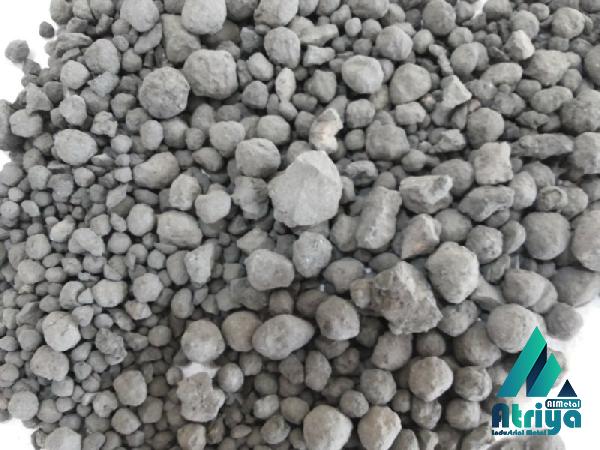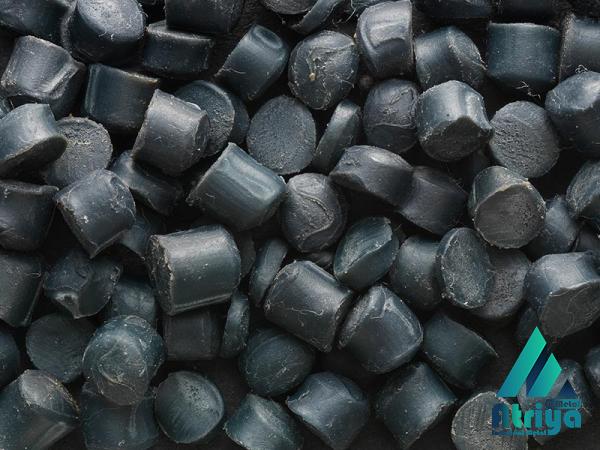Iron pellet plants play a vital role in the iron and steel industry, serving as a key link between mining operations and steel manufacturing. These plants are crucial in converting raw iron ore into high-quality iron ore pellets that can be used for steel production. This article provides an overview of iron pellet plants, including their production process, advantages, and a market outlook. 1. Production Process: The production process of iron pellet plants involves several stages, each geared towards optimizing the quality and consistency of the final product. Here is a step-by-step breakdown of the process: a. Mining and Extraction: Iron ore is extracted from mines and undergoes various beneficiation processes. This involves crushing, screening, and grinding the ore to a desired size. b. Blending and Mixing: Different types of iron ores are blended together to achieve the desired chemical composition. This step ensures a consistent product that meets the specifications of steel manufacturers. c. Pelletizing: The blended iron ore is then formed into small balls known as green pellets. This is done by adding a binder, such as bentonite, which helps maintain the shape of the pellets during the subsequent processes.
iron
 The green pellets are then dried and cured. d. Induration: The dried pellets are heated in a furnace known as an induration machine or kiln. The purpose of induration is to sinter the pellets, making them more durable and stable. This involves subjecting the pellets to high temperatures, where they undergo physical and chemical changes. e. Cooling and Screening: After induration, the pellets are cooled and screened to separate the desired pellet size for shipment. This final step ensures that only high-quality pellets are used for steel production. 2. Advantages of Iron Pellet Plants: Iron pellet plants offer several advantages over other forms of iron ore, such as raw ore or concentrates. Some key advantages include: a. Improved Iron Content: Iron pellets typically have higher iron content compared to raw ore or concentrates. This higher iron content results in increased efficiency during steel production, reducing waste and maximizing output. b. Consistent Quality: Iron pellet plants produce pellets with consistent chemical and physical properties, ensuring uniformity in steel manufacturing processes. This consistency improves product quality and reduces the need for additional processing or adjustments, leading to cost savings.
The green pellets are then dried and cured. d. Induration: The dried pellets are heated in a furnace known as an induration machine or kiln. The purpose of induration is to sinter the pellets, making them more durable and stable. This involves subjecting the pellets to high temperatures, where they undergo physical and chemical changes. e. Cooling and Screening: After induration, the pellets are cooled and screened to separate the desired pellet size for shipment. This final step ensures that only high-quality pellets are used for steel production. 2. Advantages of Iron Pellet Plants: Iron pellet plants offer several advantages over other forms of iron ore, such as raw ore or concentrates. Some key advantages include: a. Improved Iron Content: Iron pellets typically have higher iron content compared to raw ore or concentrates. This higher iron content results in increased efficiency during steel production, reducing waste and maximizing output. b. Consistent Quality: Iron pellet plants produce pellets with consistent chemical and physical properties, ensuring uniformity in steel manufacturing processes. This consistency improves product quality and reduces the need for additional processing or adjustments, leading to cost savings.
Specifications of iron
 c. Environmental Benefits: Pelletizing iron ore helps to reduce environmental impact. By converting raw ore into pellets, the transportation and storage of the material become more efficient, reducing carbon emissions. Additionally, pelletizing can make use of lower-quality iron ores, which might otherwise be left unused or discarded. d. Enhanced Iron Recovery: Pelletizing lower-grade iron ores provides an opportunity to recover valuable iron that would otherwise remain untapped. This increased recovery rate promotes sustainable mining practices and reduces waste. 3. Market Outlook: The iron pellet plant industry has experienced significant growth in recent years due to the increasing demand for steel products globally. Major factors influencing the market outlook include: a. Steel Demand: The demand for steel, a key driver of iron pellet plants, is expected to grow steadily, fueled by infrastructure development, industrialization, and urbanization in emerging economies. Rising construction activities, manufacturing sectors, and the need for renewable energy infrastructure further contribute to steel demand. b. Focus on Environment and Sustainability: Governments and industries worldwide are prioritizing environmental sustainability. Iron pellet plants, with their lower carbon footprint and efficient iron recovery, align with these environmental goals. This focus on sustainability is likely to drive increased adoption of iron pellets in steel production.
c. Environmental Benefits: Pelletizing iron ore helps to reduce environmental impact. By converting raw ore into pellets, the transportation and storage of the material become more efficient, reducing carbon emissions. Additionally, pelletizing can make use of lower-quality iron ores, which might otherwise be left unused or discarded. d. Enhanced Iron Recovery: Pelletizing lower-grade iron ores provides an opportunity to recover valuable iron that would otherwise remain untapped. This increased recovery rate promotes sustainable mining practices and reduces waste. 3. Market Outlook: The iron pellet plant industry has experienced significant growth in recent years due to the increasing demand for steel products globally. Major factors influencing the market outlook include: a. Steel Demand: The demand for steel, a key driver of iron pellet plants, is expected to grow steadily, fueled by infrastructure development, industrialization, and urbanization in emerging economies. Rising construction activities, manufacturing sectors, and the need for renewable energy infrastructure further contribute to steel demand. b. Focus on Environment and Sustainability: Governments and industries worldwide are prioritizing environmental sustainability. Iron pellet plants, with their lower carbon footprint and efficient iron recovery, align with these environmental goals. This focus on sustainability is likely to drive increased adoption of iron pellets in steel production.
buy iron
 c. Technological Advancements: Continuous improvements in pelletization technology have led to enhanced pellet quality, cost efficiency, and reduced environmental impact. Advanced pelletizing processes, such as using organic binders or introducing innovative pelletization methods, are being explored to further optimize operations. d. Resource Availability: The availability of high-quality iron ore reserves is crucial for the growth of the iron pellet plant industry. Stable and secure access to these resources ensures the uninterrupted supply of raw materials for pellet production. Conclusion: Iron pellet plants are essential for the iron and steel industry, transforming raw iron ore into high-quality pellets that contribute to efficient and sustainable steel production. The production process, advantages, and market outlook outlined in this article highlight the significance of iron pellet plants in meeting the growing demand for steel, while addressing environmental concerns and promoting resource efficiency. As the steel industry continues to evolve, iron pellet plants will play a crucial role in shaping the future of the global iron and steel market.
c. Technological Advancements: Continuous improvements in pelletization technology have led to enhanced pellet quality, cost efficiency, and reduced environmental impact. Advanced pelletizing processes, such as using organic binders or introducing innovative pelletization methods, are being explored to further optimize operations. d. Resource Availability: The availability of high-quality iron ore reserves is crucial for the growth of the iron pellet plant industry. Stable and secure access to these resources ensures the uninterrupted supply of raw materials for pellet production. Conclusion: Iron pellet plants are essential for the iron and steel industry, transforming raw iron ore into high-quality pellets that contribute to efficient and sustainable steel production. The production process, advantages, and market outlook outlined in this article highlight the significance of iron pellet plants in meeting the growing demand for steel, while addressing environmental concerns and promoting resource efficiency. As the steel industry continues to evolve, iron pellet plants will play a crucial role in shaping the future of the global iron and steel market.











Your comment submitted.